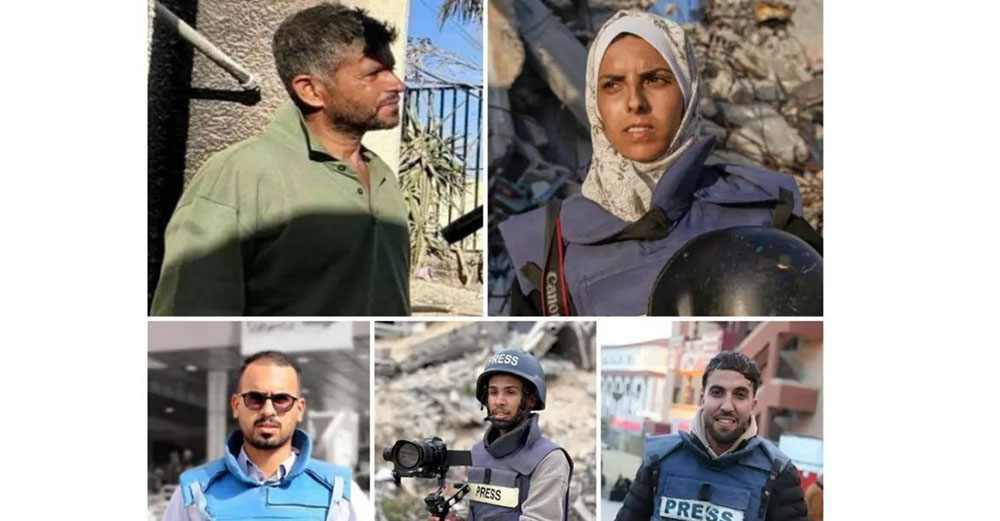
Kathmandu – The world once again witnessed the devastating human cost of war on Monday, when an Israeli strike hit Nasser Hospital in Khan Younis, southern Gaza, killing at least 20 people. Among the dead were five journalists who had been working with major international media outlets, including Reuters, the Associated Press (AP), Al Jazeera, and Middle East Eye. The news has sent shockwaves through the global journalism community.
According to the Hamas-run Ministry of Health, the airstrike not only claimed the lives of these journalists but also killed four healthcare workers, as confirmed by the World Health Organization. Footage from the scene reveals that after the first explosion, rescue workers rushed in—only to be met by a second blast minutes later. Witnesses described panic, chaos, and scenes of horror as medical teams tried to save lives.
Israeli Prime Minister Benjamin Netanyahu referred to the incident as a “tragic accident,” while military officials stated that an investigation is underway. But for many, the loss feels far deeper than a mere accident — it is another chapter in a war that has made truth-telling a deadly act.
The journalists killed have now been identified. Reuters lost its cameraman Hussam Al-Masri, who was transmitting live footage from a rooftop when the strike occurred. Another Reuters contributor, photojournalist Hatem Khaled, was reportedly injured in the second blast. AP confirmed the death of its freelance journalist, 33-year-old Mariam Dagga, expressing deep sorrow and shock over her loss.
Also among the dead were Mohammed Salama of Al Jazeera, freelance reporter Ahmed Abu Ajiz of Middle East Eye, and photojournalist Moaz Abu Taha, who had worked with several international outlets including Reuters. Their deaths bring the total number of journalists killed in Gaza since the war began in October 2023 to nearly 200, marking it as one of the deadliest conflicts for the press in recent history.
The Committee to Protect Journalists (CPJ) has repeatedly warned that Gaza has become a graveyard for journalists, especially as Israel has blocked most international reporters from entering independently. As a result, global media relies heavily on local journalists—who now face extraordinary risks every single day.
A British aid worker at the hospital described the moment of the attack as pure terror. The first blast occurred around 10 a.m. local time. Within minutes, as medical personnel rushed to aid the injured, a second explosion tore through the area.
A now-circulating video from the hospital shows a doctor standing at the entrance of Gaza’s main southern hospital, holding up blood-soaked clothing in an attempt to show the world what happened to the journalists.
UN Secretary-General António Guterres responded to the killings with a somber message, saying these horrifying deaths underscore the extreme dangers that both healthcare workers and journalists face while performing their essential duties in the midst of brutal conflict.
These were not just names on a casualty list. They were storytellers—eyes and ears of the world, who stood on the frontlines not with weapons, but with cameras and notebooks. In their silence, a part of the truth has been buried. But their work, and their courage, will not be forgotten.
FACEBOOK COMMENTS